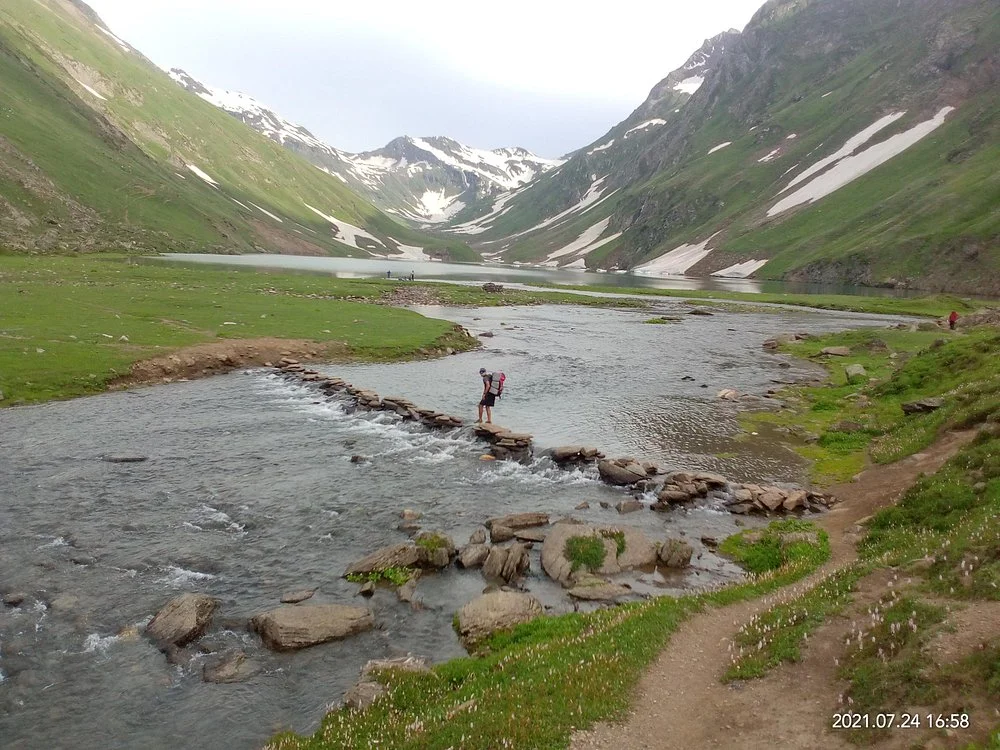Neelum Valley, located in Azad Jammu and Kashmir (AJK), Pakistan, is renowned for its breathtaking landscapes, rich cultural heritage, and diverse ecosystems. Situated approximately 100 kilometers northeast of Muzaffarabad, the valley stretches along the Neelum River and is bordered by the Line of Control (LoC), making it a region of both natural beauty and geopolitical significance.
Adventure & Ecotourism
The valley offers numerous trekking routes, camping sites, and opportunities for fishing and birdwatching. Efforts are underway to promote sustainable tourism, balancing development with environmental conservation.
Climate
Neelum Valley’s elevation ranges from 2,000 feet at its base to over 12,000 feet at higher altitudes. The valley experiences a temperate climate, with hot summers and cold winters. Due to its proximity to the LoC, the region has experienced occasional cross-border tensions, impacting local tourism and daily life.

Major Attractions
Sharda: A picturesque town known for its historical significance and the ruins of the ancient Sharada Peeth temple, an important center of learning in ancient Kashmir.
Kel: A popular base for treks to nearby destinations like Arang Kel and Ratti Gali Lake.
Ratti Gali Lake: An alpine glacial lake situated at 12,130 feet, accessible via a challenging trek from Dowarian.
Shounter Lake: Located at 3,100 meters, this lake is surrounded by snow-capped peaks and lush vegetation.
Dhani Waterfall: A 15-meter waterfall located about 30 kilometers from Muzaffarabad, offering a serene spot for visitors.

Languages
Several languages are spoken natively in the district. The predominant one is Hindko. It is the language of wider communication in the area and is spoken at a native or near-native level by almost all members of the other language communities, many of whom are abandoning their language and shifting to Hindko.
Neelum Valley, located in Azad Jammu and Kashmir (AJK), Pakistan, has a rich and diverse history that reflects its strategic importance, cultural significance, and natural beauty. Here’s a deeper look into the history of Neelum Valley:
Ancient and Medieval History
Early Settlements: The region of Neelum Valley has been inhabited for centuries, with evidence of early civilizations that thrived around the banks of the Neelum River. The valley’s strategic location along the ancient trade routes connecting Central Asia to the Indian subcontinent made it a focal point for various historical and cultural exchanges.
Sharada Peeth: One of the most historically significant sites in Neelum Valley is Sharada Peeth, located near the town of Sharda. It was once an ancient Hindu learning center and is believed to be one of the oldest educational institutions in the Kashmir region. The site is associated with Sharda, the Hindu goddess of learning and wisdom, and its ruins are still visited by pilgrims and tourists today.
Medieval and Mughal Influence
Mughal Period: The Mughal Empire, during its rule (16th to 18th centuries), had significant influence over the region, although it was more prominent in Kashmir. However, the valleys of Kashmir and Neelum shared cultural and trade connections during this time. The Mughals, known for their grand architecture, are believed to have built several small forts and structures in the valley, but most of these have either deteriorated or remain largely undocumented.
Kashmir’s Cultural Impact: The broader Kashmir region has had a profound impact on the culture, art, and architecture of Neelum Valley. The traditions, languages (including Shina), and crafts in Neelum are deeply connected to Kashmir’s Persian and Sufi influences, which have shaped the region’s identity over time.
Colonial Era and Post-Independence
British Colonial Influence: During the British colonial period in the Indian subcontinent (19th to mid-20th century), Neelum Valley became part of the princely state of Kashmir and Jammu, which was ruled by the Dogra dynasty. This period saw a further blending of Kashmiri culture and the development of infrastructure that allowed for the region’s expansion, though it remained largely isolated from the rest of British India.
Post-1947 Partition and the Kashmir Conflict: After the partition of British India in 1947, Neelum Valley became part of Azad Jammu and Kashmir (AJK), administered by Pakistan. However, the region’s proximity to the Line of Control (LoC), which divides Indian-administered Jammu and Kashmir from Pakistan-administered Kashmir, has made it a strategic and sensitive area. The valley has seen multiple conflicts between India and Pakistan over control of Kashmir, especially during the Indo-Pakistani Wars.
Recent History and Geopolitical Importance
Kashmir Conflict: Since 1947, the Kashmir conflict has overshadowed much of the region’s development. The Neelum Valley’s location along the LoC has made it a flashpoint during times of heightened tensions between India and Pakistan, with both sides occasionally engaging in military skirmishes. Local residents have often been caught in the crossfire, and tourism to the area has fluctuated depending on the security situation.
Natural Disasters and Reconstruction: In more recent history, Neelum Valley has faced devastating natural disasters, such as the 2010 earthquake and the 2020 avalanche that caused significant loss of life. These events have slowed development in the region, but reconstruction efforts are ongoing. Additionally, the Neelum-Jhelum Hydro-Power Project, initiated in 2008, aims to harness the valley’s river resources for electricity production, though the project has faced delays and controversy over its environmental impact.
Modern-Day Tourism and Challenges
Tourism Development: Despite its history of conflict and natural disasters, Neelum Valley remains one of the most stunning tourist destinations in Pakistan. Its picturesque landscapes, including the Ratti Gali Lake, Shounter Lake, and Kel, continue to draw domestic and international visitors. Tourism has slowly revitalized the local economy, although infrastructure challenges remain due to its remote location and the ongoing security situation.
Environmental and Security Challenges: The valley’s history has also been shaped by efforts to balance development and environmental conservation. As tourism increases, concerns about protecting the natural environment and managing the growing number of visitors have become more pronounced. Security concerns continue to impact tourism, especially along the LoC.
